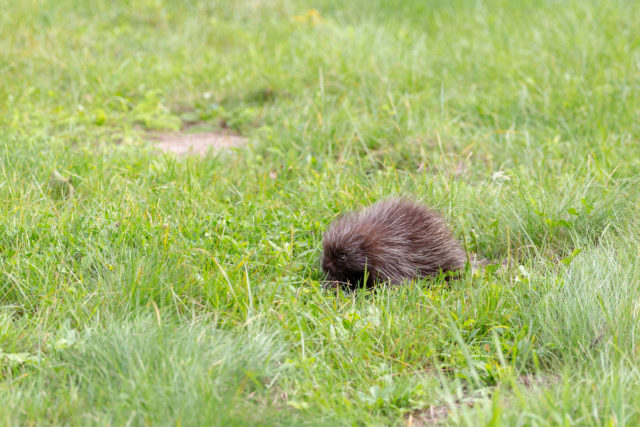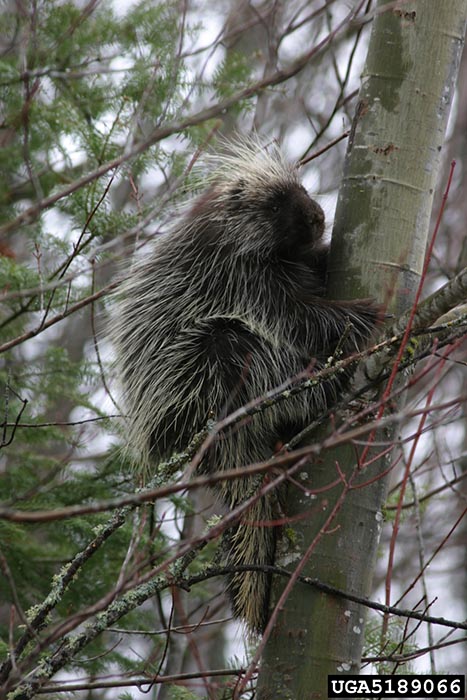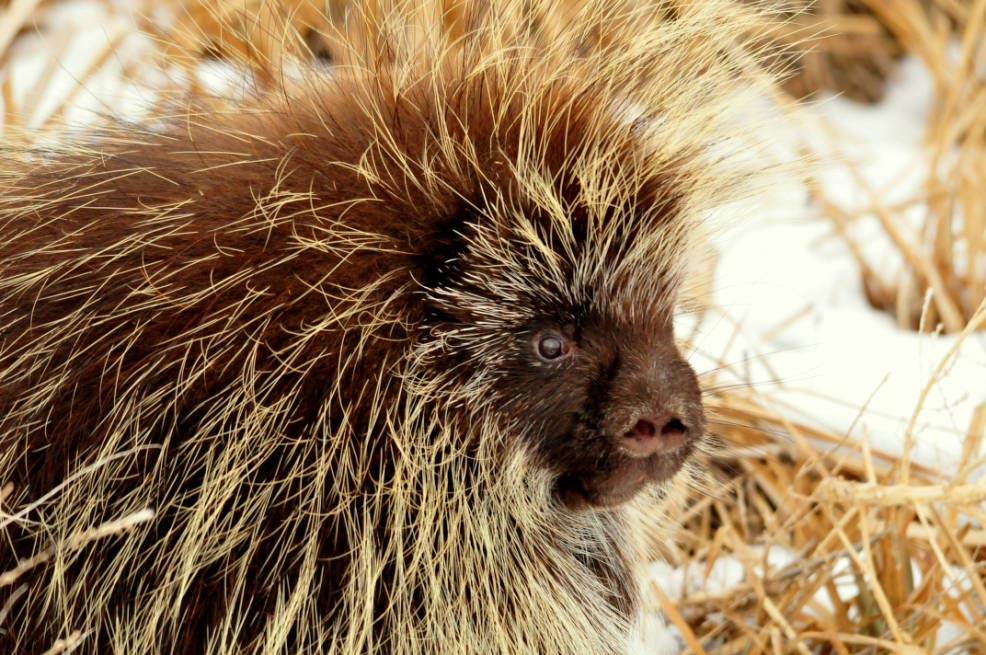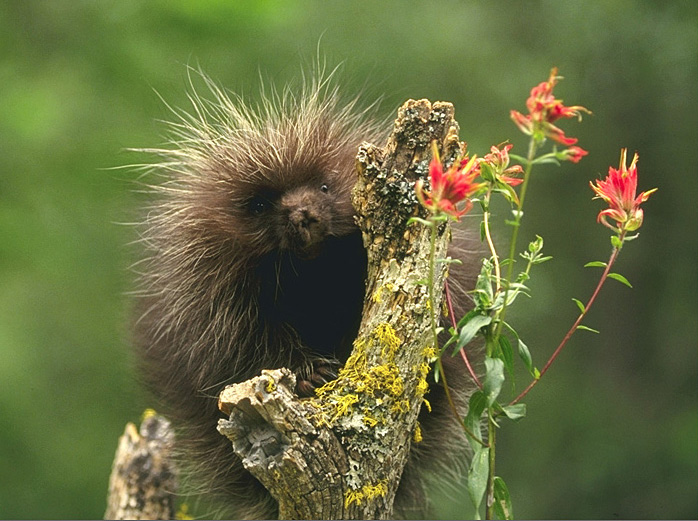By: Corrina Yobp
The small critter seen most frequently at Bear Brook State Park among 2021 Student Conservation Association members this winter season is the North American porcupine. One tower of rocks beside the road provides a den of safety for this creature, with tracks marking the daily journey to and from home.

As a primarily nocturnal animal, this Bear Brook resident has been seen mostly at night, but has been spotted climbing trees during the day. Porcupines are active throughout the year, although they will stay in their dens if weather is severe enough.

The most recognizable feature of porcupines are their quills, and they can have a coating of up to 30,000 quills! These quills are hairs ending in barbs that cover the whole body besides the stomach. The keratin that forms human fingernails and hair also make up these tiny defense mechanisms. Quills are soft when a porcupine is born, but harden within a few hours of birth to form this shell of protection. Porcupines are not aggressive, and they cannot actually shoot their quills, as some might suggest. However, they can swing their tail at oncoming predators in defense, getting quills hooked into the attacker that get bigger and harder to get out as time goes by due to body heat.

Porcupines can climb trees, and forage for mostly leaves, twigs, and bark in the winter, especially from hemlock trees. Their main food source changes with the seasons in order to adapt to different availabilities and survive the scarcity of the winter. Surprisingly enough, porcupines can also swim exceptionally well. These animals can float since the middle of their quills are hollow, making the task of swimming easier.

Climbing and swimming skills are important to porcupine survival, especially when confronted with one of their more intimidating predators, the fisher. Fishers are nocturnal with claws that allow them to be good climbers as well, and they have adapted to hunt porcupines. Fishers attack from the front and roll the porcupine over to expose their unprotected stomach for their meal.

Porcupines are often viewed as troublesome because of their eating habits, which includes using things like porches, plywood, and valuable lumber for food. They also love salt, making porcupine collisions along the road especially deadly for these animals, as they try to eat road salt that was meant for treating icy roads.
However, porcupines still offer a few benefits to their surrounding environment that might be less apparent at first glance than the property damage they can cause. By eating wood, porcupines are creating shelter for other animals in the form of hollowed out trees. For example, birds could have a new place to nest and easier access to food sources within a tree eaten by a porcupine. Also, more light can filter through a thinner canopy as this creature eats meals from high above the forest floor. This change provides the opportunity for more diverse plants to grow on the ground, opening the forest up to more of the wildlife that depend on them for food.

Overall, porcupines have equipped themselves with great adaptations for survival. Below the surface of their quills, these creatures are much more fascinating and helpful than they might seem. If you feel inspired to try to find one of these fellows after learning so much about them, be sure to visit the place that many porcupines call home, New Hampshire’s very own Bear Brook State Park.

